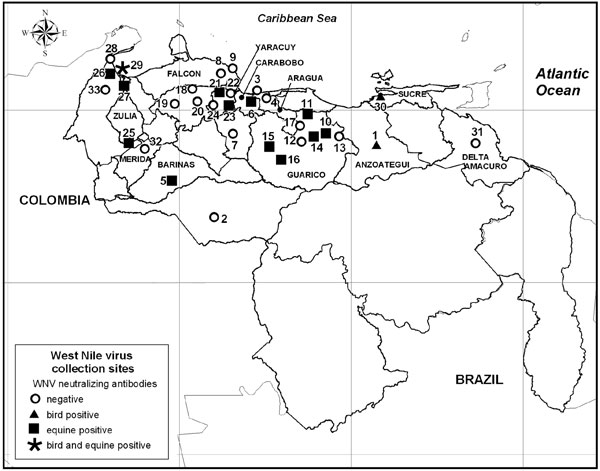Volume 13, Number 4—April 2007
Letter
West Nile Virus, Venezuela
Figure

Figure. Collection sites for West Nile virus (WNV) in Venezuela. Symbols represent results of tests for specific antibodies to WNV in serum samples of birds and horses (viral titers in a 90% plaque reduction neutralization test >40 and a 4-fold differential inhibition in a neutralization assay to WNV compared with other related flaviviruses). Source: Instituto Geográfico de Venezuela Simón Bolivar, Caracas, Venezuela.
Page created: June 28, 2010
Page updated: June 28, 2010
Page reviewed: June 28, 2010
The conclusions, findings, and opinions expressed by authors contributing to this journal do not necessarily reflect the official position of the U.S. Department of Health and Human Services, the Public Health Service, the Centers for Disease Control and Prevention, or the authors' affiliated institutions. Use of trade names is for identification only and does not imply endorsement by any of the groups named above.